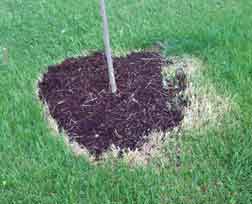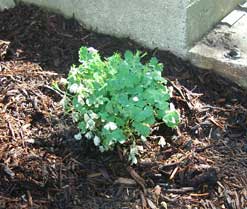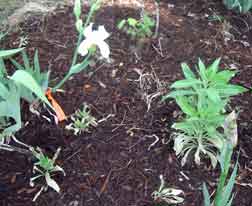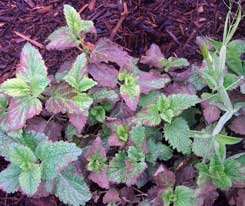Toxic mulch
Editor’s note: This article is from the archives of the MSU Crop Advisory Team
Alerts. Check the label of any pesticide referenced to ensure your use is
included.
It seems that every year we hear from homeowners having problems with recently spread mulch. The problem is rapid desiccation of foliage of all plants in landscape
beds and grass along these beds within a day or two of spreading the
mulch. This problem has been termed toxic mulch, sour mulch or hot
mulch. Toxic mulch typically has a very sour, pungent, vinegary odor. A
mulch sample submitted recently to the lab had a pH of 4.1.
Toxic mulch results from poorly processed, managed, stored or “green”
mulch. Chemicals produced by fermenting organisms in the mulch pile
under oxygen-deficient conditions can cause significant injury on annual
and perennial landscape plants. These toxic substances can include
ammonia, alcohol, methanol, acetic acid or hydrogen sulfide. These
chemicals often escape, or volatilize, soon after spreading the mulch.
Desiccation or dying of leaf tissue will first be observed on the bottom
leaves of plants and then progress upward. Large perennial plants may
have injury only on the lower leaves and will most likely recover over
time. The volatizing chemicals may be too much for smaller annual
plants. Mulch with a pungent odor should not be spread in landscape
beds. If lower leaf injury is observed soon after spreading mulch,
quickly remove it in hopes of preventing further damage. Toxic mulch can
be spread out in a driveway and watered in for a few days to leach out
the toxic chemicals.
|
|
|
|



 Print
Print Email
Email






